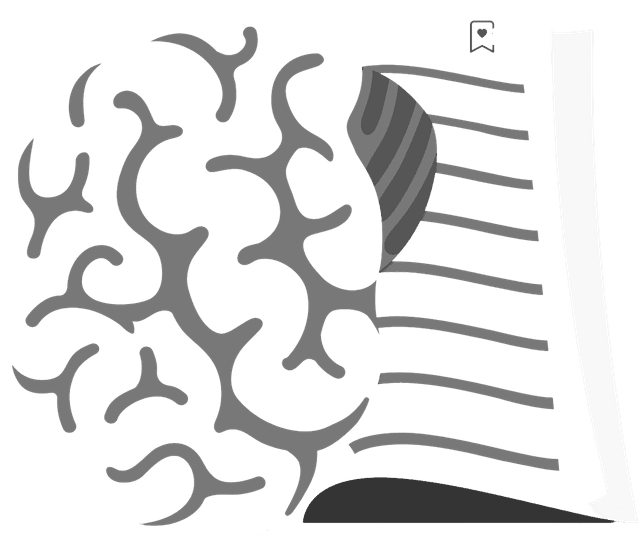Loading...

What is psychotherapy?
Psychotherapy is a form of treatment aimed at improving mental health and resolving or managing psychological issues through discussions between the patient and a trained professional, usually referred to as a psychotherapist.
Through this process, individuals can explore the emotions, thoughts, and behaviors causing them difficulties, understand the roots of their psychological problems, and work towards change and improvement.
It can be conducted in individual, group, couples, or family settings, depending on the needs and goals of the patient.
Psychotherapy encompasses a wide range of approaches and methodologies, depending on the theoretical framework and training of the psychotherapist. It includes techniques such as System Therapy, Narrative Therapy, Cognitive-Behavioral Therapy, Psychoanalysis, Person-Centered Therapy and others.
It is a process that requires the time, effort, and commitment of the patient in order to lead to significant improvements in quality of life and psychological well-being.
It aims to:
improve quality of life
develop healthy behavior patterns
strengthen the individual’s coping mechanisms
resolve specific psychological or emotional problems.

Who can benefit from psychotherapy?
Psychotherapy can be beneficial for a wide range of people, including those facing:
Psychological difficulties or disorders, such as anxiety, depression, panic, phobias, eating disorders, and many others.
Problems in interpersonal relationships, such as communication issues in marriage, between parents and children, in the workplace, or in other relationships.
Stressful situations due to major life changes, such as divorce, the death of a loved one, traumatic experiences, career changes, relocation, etc.
Issues related to self-esteem and personal growth, such as improving self-confidence or managing anger.
Challenges related to identity, sexuality, or other personal matters.
Coping with chronic illnesses, pain, autoimmune diseases, or other physical difficulties that affect mental health.
The need to develop personal skills, such as time management, stress management, and decision-making.
In general, psychotherapy can help anyone who feels that the challenges in their life are more than they can handle alone, or when these difficulties negatively impact their quality of life.

What is the role of a psychotherapist?
The role of a psychotherapist is multifaceted and crucial for individuals’ mental health and well-being. Essentially, a psychotherapist works with individuals, couples, families, or groups to help their clients address and process psychological issues, emotional difficulties, and behavioral problems. The role includes the following key elements:
Creating a safe and supportive environment: The psychotherapist provides a space where clients can feel secure in expressing their emotions, thoughts, and experiences without the fear of being judged for what they think or do.
Assessment: The psychotherapist conducts initial evaluations — both through the individual’s behavior and demeanor as well as through the use of specific questionnaires — to understand the issues, needs, and goals of their clients, in order to develop an appropriate treatment plan.
Implementation of therapeutic approaches: The psychotherapist utilizes specialized therapeutic techniques and approaches, depending on their expertise as well as the needs and goals of the therapy.
Developing a trust-based relationship: Through the professional relationship, the psychotherapist helps clients build trust and feel comfortable sharing and working on the issues that concern them.
Exploration and processing: The psychotherapist helps clients explore the roots of their problems, recognize and address dysfunctional patterns of thinking or behavior, and develop new, more effective coping strategies.
Support and guidance: The psychotherapist provides support and guidance throughout the therapy process, helping clients face challenges and move towards personal growth and improvement.
Progress evaluation and adjustment of the treatment plan: Regular assessment of the client’s progress and readjustment of their treatment goals to ensure the maximum effectiveness of the therapy.

What is the duration of a session?
The duration of a session may vary depending on the psychotherapist, the therapeutic approach being used, and the client’s needs.
The most common duration of a session is approximately 50 minutes. This is standard for many mental health professionals and is considered sufficient time for the client to process important issues without becoming overly exhausting.
There are also cases where sessions may last longer, such as 90 minutes, for family or group therapy sessions.
The frequency of sessions can also vary, with some clients meeting their psychotherapist once a week, while others may require more frequent sessions or, conversely, have sessions less often, such as twice a month. The duration and frequency of sessions are adjusted to the client’s needs and goals.

How can I find a suitable psychotherapist for me?
Choosing a suitable psychotherapist is a personal process and may require some time and research.
It is very important to determine what kind of support you need based on your specific needs. Consider your goals for therapy and the challenges you want to address.
Research: Start by searching for psychotherapists through reputable directories or online platforms. You can also ask for recommendations from doctors, friends, or family members who have sought similar services.
Look for psychotherapists who specialize in the issues you want to work on and use a therapeutic approach that you feel would suit you.
Check the psychotherapist’s qualifications, training, and experience. It is important that the professional has the appropriate certification and adheres to professional standards, remaining committed to the Code of Ethics.
Introductory session: Many psychotherapists offer an initial session, either free or at a reduced cost. This is a good opportunity to see if you feel comfortable with the therapist and their working method.
Be prepared to ask questions during the first meeting to better understand the psychotherapist’s working style and determine if you feel comfortable with them.
Trust your intuition: It is important to feel comfortable and confident with your psychotherapist. If, after a few sessions, you don’t feel that they are the right professional for you, don’t hesitate to explore other options.

What is System and Family Therapy?
System and Family Therapy is a psychotherapeutic approach that focuses on understanding and addressing an individual’s problems by taking into account the context of their relationships with family and their environment
This approach views the individual not ‘in isolation’ but as part of a broader system, where relationships and interactions play a crucial role in shaping and resolving problems. In other words, it focuses on the relationships and interactions among members of a family or system (such as a couple, a group, or a wider social environment). It is applied at both the individual level and within couples, families, and groups.
Family Therapy aims to improve family dynamics and create healthier patterns of communication and interaction. Its purpose is to help family members resolve conflicts, find ways to support one another, and face challenges as a united group.
Often, this therapy is applied when someone in the family is facing mental health issues or other challenges. However, the approach also helps in addressing and resolving broader family issues that affect all members.

What are the goals of System and Family Therapy?
Understanding family dynamics: Exploring the roles, relationships, and dynamics among family members to understand how these interactions influence behavior, emotions, and the emerging qualities of individuals.
Promoting communication: Developing effective communication skills to improve interaction and understanding among family members.
Changing dysfunctional patterns: Identifying and altering dysfunctional behavior and thinking patterns that may be causing or maintaining problems.
Enhancing support: Creating a supportive and encouraging environment where family members feel safe to express their emotions, needs, and receive help.
Developing problem-solving skills: Providing tools and strategies for effectively solving problems and managing conflicts

How does System and Family Therapy work?
System and Family Therapy can be applied either to an individual if the issue is personal, to couples if the concern involves the relationship, or to all family members. In many cases, therapy includes all family members to achieve a comprehensive understanding of the situation and to encourage collaboration.
Collaboration: A systemic therapist may need to work with other professionals. Depending on the case, other healthcare professionals, such as psychiatrists or social workers, may be involved to provide a comprehensive approach.
Use of various techniques: The therapist may utilize different techniques, such as role-playing, constellations, and specific exercises, to enhance understanding and facilitate change.
System and Family Therapy can be particularly effective for a variety of issues, such as family conflicts, parent-child relationship problems, psychological disorders, addictions, and other situations that affect family dynamics.

How does Narrative Therapy work within the context of Systemic and Family Therapy?
In the context of System and Family Therapy, the Narrative approach focuses on creating shared narratives and analyzing difficulties from the perspective of the system or family. It is a dynamic and effective approach that enhances understanding, communication, and unity within the family, promoting both personal and collective growth.
This method allows family members to explore and understand the dynamics of their relationships and to find new ways to address their problems. Therapists assist family members in co-creating narratives that include the experiences and perspectives of everyone involved. This promotes a sense of unity and collaboration and helps members view their relationships from a new perspective.
Through the reconstruction of narratives, family members can recognize and change dysfunctional patterns of behavior and thinking. Therapists guide this process, encouraging members to view problems as separate and external to the family, and to create new, more empowering narratives.

What are the key principles of Narrative Therapy?
Externalization of the problem: Problems are not considered inherent to the person but external, allowing clients to see themselves as separate from their problems.
Examining and reconstructing the narrative: Clients are encouraged to recognize and redefine their life stories, allowing them to create new, more empowering narratives.
Highlighting strengths and resources: The therapy focuses on recognizing personal strengths, values, and resources that may have been overlooked in the dominant narratives.
Creating new meanings: Through the transformation of narratives, clients can discover new perspectives and meanings for their lives, enabling growth and change.

What is Νarrative Τherapy, and how does it differ from other forms of therapy?
Narrative Therapy is a psychotherapeutic approach that focuses on the creation and development of the individual or family narrative regarding experiences, relationships, and issues that arise both within and outside the family environment.
This form of therapy, developed by Michael White and David Epston in the 1980s, views the problem as separate from the person, rather than seeing the person as the problem. It also uses the story narrated by the clients to better understand their emotional relationships, dynamics, and behaviors.
Narrative Therapy is a dynamic and creative approach that offers clients the opportunity to rewrite the story of their lives in ways that promote personal growth and well-being.
The basic characteristics of Narrative Therapy that make it stand out from other forms of therapy are:
Focus on narrative: Unlike other forms of therapy, such as psychodynamic or cognitive-behavioral therapy, Narrative Therapy primarily focuses on the stories people tell about their lives and how these stories shape their experiences.
Externalization of problems: While other forms of therapy may view problems as inherent to the individual, Narrative Therapy externalizes them, seeing them as separate entities that can be examined and addressed.
Collaborative approach: Narrative Therapy views the therapist and the client as partners working together to reconstruct the client’s life narratives, rather than adopting a hierarchical relationship where the therapist is the expert.
Emphasis on cultural and social influence: This approach considers how social and cultural narratives—the culture each person carries—affect people’s personal stories, which is not always central in other forms of therapy.

What are the benefits of Narrative Therapy?
Empowerment: Clients can recognize their strengths and abilities and feel empowered to address their problems.
Development of new perspectives: Reconstructing narratives can lead to new perspectives and meanings in their lives.
Improvement of relationships: Understanding and reconstructing narratives can enhance relationships with others, as clients begin to see themselves and others in a new light.

What is the goal of Psychotherapy Tale?
Psychotherapy Tale focuses on the application of System Psychotherapy, emphasizing the understanding and reconstruction of clients’ narratives. At the same time, the use of Narrative Therapy allows clients to discover new perspectives and redefine their experiences.
At Psychotherapy Tale, we handle a variety of cases involving family and couples therapy as well as individual therapy, with the aim of improving relationship dynamics and fostering personal growth.
We are able to help individuals address issues such as anxiety and depression, anger management, low self-esteem, sleep disorders, phobias and obsessions, eating disorders, grief and loss, family conflicts, relationship issues, identity and self-awareness challenges, chronic illnesses and autoimmune conditions, work-related stress and difficulties, communication problems, difficulties adjusting to life changes (e.g., divorce, relocation), trauma and post-traumatic stress (PTSD), sexuality and sexual identity issues, addictions (e.g., substances, alcohol, gambling, internet), insecurity and social isolation.
Through the lens of positive psychology and thinking, we aim to highlight the positive side of situations. For this reason, our goal is to strengthen the mental resilience of our clients and empower them to face challenges.
At Psychotherapy Tale, we create a safe and supportive environment where clients can explore their problems and work towards achieving their goals with support and empathy. Additionally, we strive to collaborate with the families and systems surrounding the client, recognizing the importance of these relational dynamics in the therapeutic process.